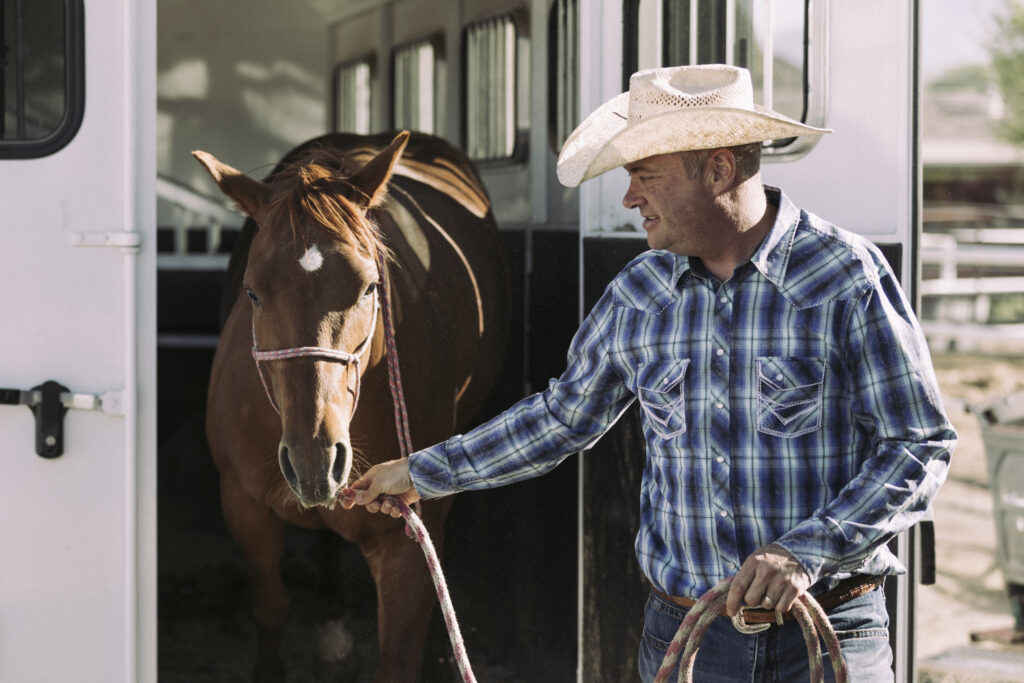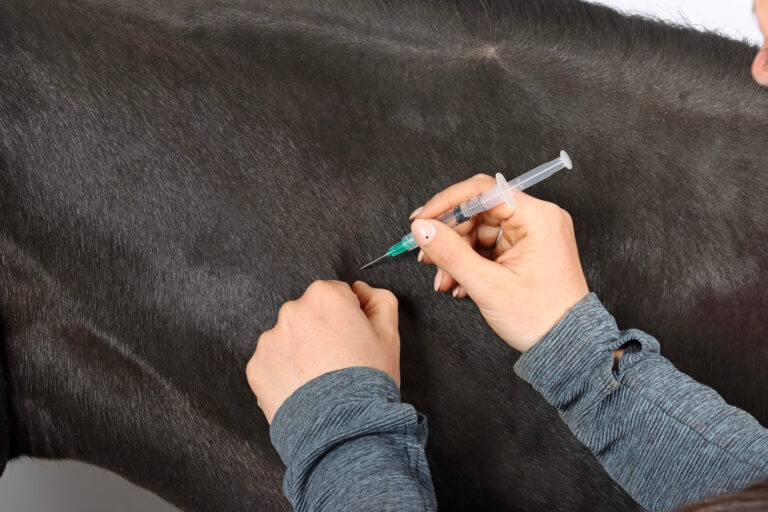This article originally appeared in the Fall 2025 issue of EquiManagement. Sign up here for a FREE subscription to EquiManagement’s quarterly digital or print magazine and any special issues.

As equine practices respond to the stresses of providing emergency services, one of the solutions that has arisen is requiring clients to haul their horses to the practice for care. The AAEP Commission on Equine Veterinary Sustainability’s Emergency Subcommittee identified the haul-in option while working on this pain point.
Communicating Haul-In Emergency Policies
Obviously, not all clients have trailers, so initiating a policy of emergency care only at the practice’s facility must be introduced with sufficient time for horse owners to arrange contingency plans. Some practices prefer to make ambulatory emergency service significantly more expensive than care at the practice location, allowing clients to make the decision as to where the examination will occur. Horses that are nonambulatory still require on-farm visits, of course, but this percentage is generally very small.
In either case, client communication about the new policies must set clear expectations and outline unambiguous boundaries. Clients should not be surprised or confused by your clinic’s emergency service. Reinforce your policies using repetition and multiple modes of communication—flyers handed out at farm visits, letters sent by mail, email notifications, social media posts, and perhaps even Instagram Reels or TikTok videos.
Industry Prevalence of Emergency Haul-In Policies
In June 2023, the AAEP Horse Owner Education Committee partnered with the Equine Network family of publications to survey horse owners about their experiences with veterinary services during this time of difficulty attracting and retaining equine veterinarians. In a question asking what changes in policies horse owners were seeing from their veterinary practices, 12.2% of 2,384 respondents indicated their provider required hauling in to the clinic for after-hours emergency service. When asked what proactive steps they had taken to ensure future emergency services, more than half (53%) of respondents indicated they had either bought or already owned a trailer.
More practices are considering building small haul-in facilities to reduce the effort needed to attend emergencies. Less driving time can increase veterinarians’ efficiency when handling multiple urgent calls—they can begin treating one patient while the next is en route. In addition, having heat or cooling, bright lighting, good footing, and protection from the elements makes providing care much more comfortable and effective. Equipment and supplies are close at hand as well. When needed, an employee might be able to come in to assist more readily. As a bonus, using a haul-in facility for routine calls during the day can increase efficiency markedly.
The 2024 AVMA/AAEP Economic State of the Equine Veterinary Profession Report showed that of the various types of equine practice, 45% are ambulatory only, and 30% are ambulatory with a haul-in facility. Specialty referral hospitals with an ambulatory division accounted for 9%.
Final Thoughts
Weigh the costs of building a haul-in facility against the gain in time saved. If you build a facility, it must be used regularly so increased revenue and quality of life offset the costs of utilities, insurance, and maintenance. Most practitioners enjoy being released from so many consecutive days and nights of driving, and clients who do not have stable areas conducive to the procedure or treatment an emergency requires are typically grateful to have an option that offers a better outcome. Even clients with outstanding facilities will come to accept the need to make their veterinarian’s life easier to retain them in the profession.
Related Reading
- The Business of Practice: Shifting to a Haul-in Emergency Model
- AAEP Commission on Veterinary Sustainability: New Paradigms in Equine Emergency Coverage
- Business Briefs: Increasing Efficiency in Your Equine Practice
Stay in the know! Sign up for EquiManagement’s FREE weekly newsletters to get the latest equine research, disease alerts, and vet practice updates delivered straight to your inbox.


![[Aggregator] Downloaded image for imported item #18395](https://s3.amazonaws.com/wp-s3-equimanagement.com/wp-content/uploads/2025/09/30141538/EDCC-Unbranded-23-scaled-1-768x513.jpeg)
![[Aggregator] Downloaded image for imported item #18808](https://s3.amazonaws.com/wp-s3-equimanagement.com/wp-content/uploads/2025/11/06141153/EDCC-Unbranded-17-scaled-1-768x512.jpg)
